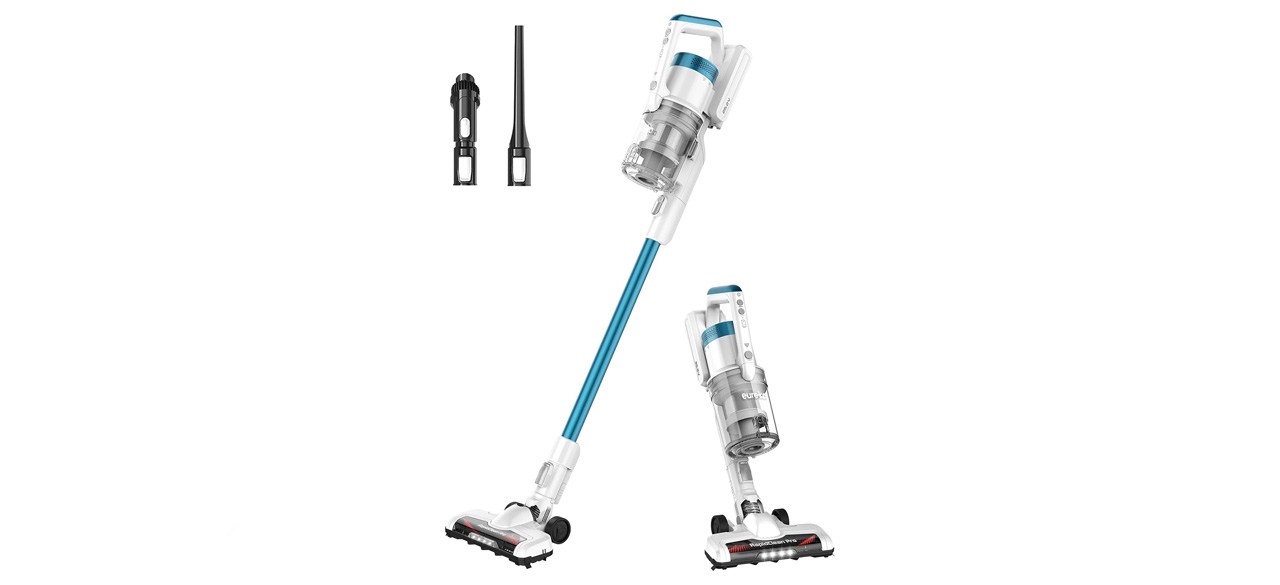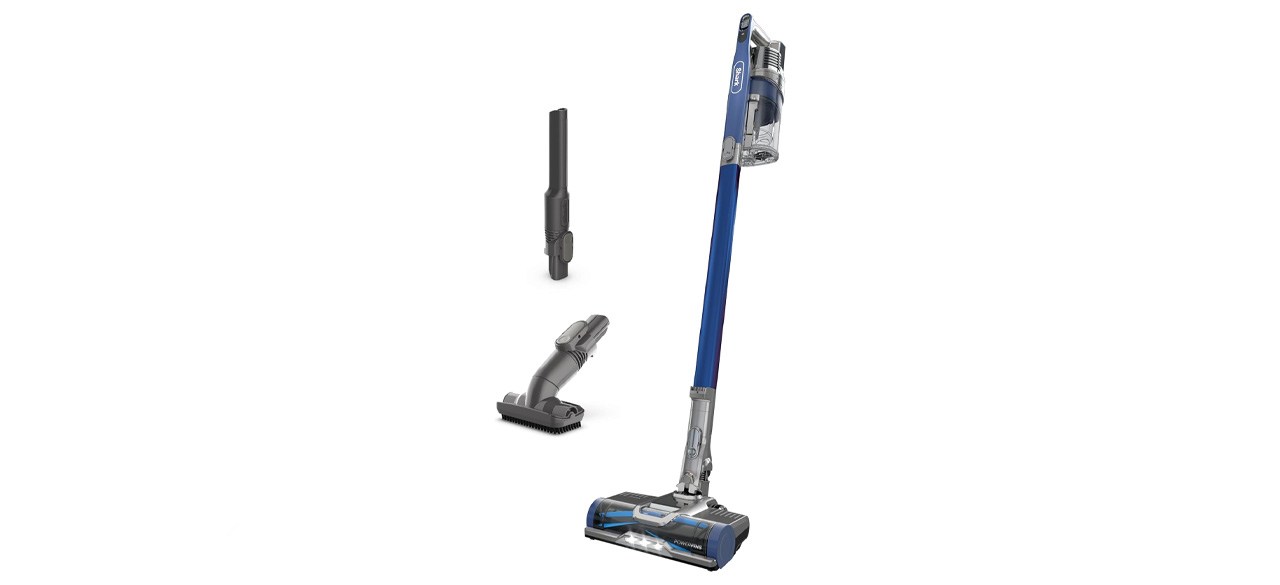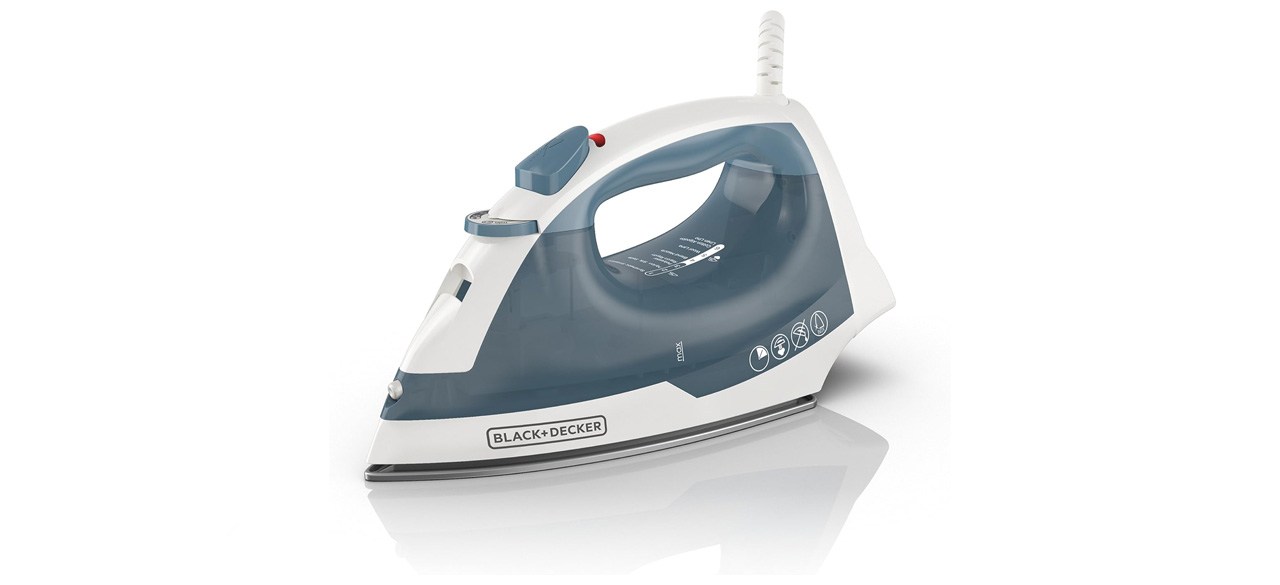
Orange County and Santa Ana Mountains under a wind advisory Thursday
- March 12, 2025
Orange County and Santa Ana Mountains was placed under a wind advisory by the National Weather Service on Wednesday at 2:16 a.m. The advisory is valid for Thursday, Mar. 13 between noon and 8 p.m.
The NWS San Diego CA said, “West winds 15 to 25 mph with gusts to 40 mph expected.”
“Gusty winds will blow around unsecured objects. Tree limbs could be blown down and a few power outages may result,” the NWS said. “Winds this strong can make driving difficult, especially for high profile vehicles. Use extra caution.”
The full list of affected locations includes:
- Santa Ana Mountains/Foothills
- Orange County Coast
- Orange County
- San Diego County Coastal Areas
- San Bernardino and Riverside County Valleys
- San Diego County Inland Valleys
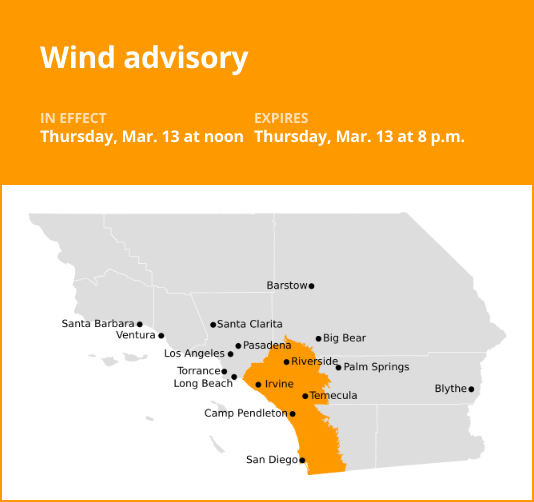
 Orange County Register
Orange County Register

Trump’s 25% tariffs on all steel and aluminum imports go into effect
- March 12, 2025
By JOSH BOAK and PAUL WISEMAN, Associated Press
WASHINGTON (AP) — President Donald Trump officially increased tariffs on all steel and aluminum imports to 25% on Wednesday, promising that the taxes would help create U.S. factory jobs at a time when his seesawing tariff threats are jolting the stock market and raising fears of an economic slowdown.
Trump removed all exemptions from his 2018 tariffs on the metals, in addition to increasing the tariffs on aluminum from 10%. His moves, based off a February directive, are part of a broader effort to disrupt and transform global commerce. The U.S. president has separate tariffs on Canada, Mexico and China, with plans to also tax imports from the European Union, Brazil and South Korea by charging “reciprocal” rates starting on April 2.
The EU announced its own countermeasures on Wednesday. European Commission President Ursula von der Leyen said that as the United States was “applying tariffs worth 28 billion dollars, we are responding with countermeasures worth 26 billion euros,” or about $28 billion. Those measures, which cover not just steel and aluminum products, but also textiles, home appliances and agricultural goods, are due to take effect on April 1.
Trump told CEOs in the Business Roundtable on Tuesday that the tariffs were causing companies to invest in U.S. factories. The 8% drop in the S&P 500 stock index over the past month on fears of deteriorating growth appears unlikely to dissuade him, as Trump argued that higher tariff rates would be more effective at bringing back factories.
“The higher it goes, the more likely it is they’re going to build,” Trump told the group. “The biggest win is if they move into our country and produce jobs. That’s a bigger win than the tariffs themselves, but the tariffs are going to be throwing off a lot of money to this country.”
Trump on Tuesday threatened to put tariffs of 50% on steel and aluminum from Canada, but he chose to stay with the 25% rate after the province of Ontario suspended plans to put a surcharge on electricity sold to Michigan, Minnesota and New York.
In many ways, the president is addressing what he perceives as unfinished business from his first term. Trump meaningfully increased tariffs, but the revenues collected by the federal government were too small to significantly increase overall inflationary pressures.
Trump’s 2018 tariffs on steel and aluminum were eroded by exemptions.
After Canada and Mexico agreed to his demand for a revamped North American trade deal in 2020, they avoided the import taxes on the metals. Other U.S. trading partners had import quotas supplant the tariffs. And the first Trump administration also allowed U.S. companies to request exemptions from the tariffs if, for instance, they couldn’t find the steel they needed from domestic producers.
While Trump’s tariffs could help steel and aluminum plants in the United States, they could raise prices for the manufacturers that use the metals as raw materials.
Moreover, economists have found, the gains to the steel and aluminum industries were more than offset by the cost they imposed on “downstream’’ manufacturers that use their products.
At these downstream companies, production fell by nearly $3.5 billion because of the tariffs in 2021, a loss that exceeded the $2.3 billion uptick in production that year by aluminum producers and steelmakers, the U.S. International Trade Commission found in 2023.
Trump sees the tariffs as leading to more domestic factories, and the White House has noted that Volvo, Volkswagen and Honda are all exploring an increase to their U.S. footprint. But the prospect of higher prices, fewer sales and lower profits might cause some companies to refrain from investing in new facilities.
“If you’re an executive in the boardroom, are you really going to tell your board it’s the time to expand that assembly line?” said John Murphy, senior vice president at the U.S. Chamber of Commerce.
The top steel exporters to the U.S. are Canada, Mexico, Brazil, South Korea and Japan, with exports from Taiwan and Vietnam growing at a fast pace, according to the International Trade Administration. Imports from China, the world’s largest steel producer, account for only a small fraction of what the U.S. buys.
The lion’s share of U.S. aluminum imports comes from Canada.
Orange County Register
Read More
Best cordless vacuum
- March 12, 2025
Which cordless vacuum is best?
If the prospect of unfurling your vacuum cleaner’s power cord, switching between outlets as you move around the house, then coiling the cord back up again makes you not want to clean, a cordless vacuum is the right choice for you.
Streamlining the vacuuming process, they’re perfect for anyone who’s reluctant about chores. The Samsung Jet 90 Cordless Vacuum is a great choice with plenty of suction power.
This article was reviewed and approved by Ketia Daniel, the BestReviews Cleaning Expert.
What to know before you buy a cordless vacuum
Battery life
Battery life is a major concern for most people buying a cordless vacuum for the first time. Cheap, basic vacuums can have maximum run times of as little as 15-20 minutes, while high-end versions can last up to 60 minutes on a single charge.
Consider how big your home is and how long it takes you to thoroughly vacuum the whole thing. Ideally, the battery should last long enough to clean all your floors, otherwise, it can be frustrating.
It’s worth noting that the maximum battery life is usually calculated in standard mode. If you use boost or high-power modes or motorized attachments, the battery will deplete more quickly.
Filter
HEPA filters are the gold standard, trapping more than 99.9% of minute particles within a given size range, including common allergens, such as pollen and pet dander. If anyone in your house has environmental allergies, it pays to buy a vacuum with a HEPA filter. Cordless vacuums on the more affordable end of the price spectrum are unlikely to have HEPA filters, but their filtration system should still do a good job of trapping dust and finer particles.
Always check how to clean and when to replace filters, if necessary, to keep your vacuum cleaner running smoothly.
Handheld option
Most cordless vacuums let you remove the top part of the vacuum from the stick and cleaning head to use it in handheld mode. This is great for vacuuming stairs, couches and other soft furnishings, sucking crumbs off counters and cleaning right into the corners of stairs. It saves you from buying a separate hand vac and makes spot cleaning a breeze.
What to look for in a quality cordless vacuum
Removable battery
When you can remove the battery from the body of the vacuum, it lets you switch out the main battery with a spare. This is great when you have a large home that you can’t clean from top to bottom on a single charge.
Power boost
The power boost mode temporarily increases suction power to target areas that need deeper cleaning.
Antitangle brushroll
If you have long hair or long-coated pets, you’ll know the pain of detangling hair from a brushroll. Some vacuums have antitangle brushrolls that hair doesn’t wrap around, leaving you with one less thing to worry about.
How much you can expect to spend on a cordless vacuum
You can find basic cordless vacuums starting at around $100-$200, while top-end versions can cost as much as $700-$800. While price isn’t everything, you generally get what you pay for, so you can’t expect a $200 vacuum to perform as well as a $600 one.
Cordless vacuum FAQ
Are cordless vacuums as powerful as corded models?
A. The simple answer to this is no, usually not. If you compare a cordless vacuum cleaner with a corded version of a similar quality or price point, the corded model will generally have better suction power. However, most people vacuum more regularly when they have cordless vacuums because the process is more painless, which makes up for the slightly lower suction power. What’s more, top manufacturers, such as Shark and Dyson, are starting to bridge the gap in suction power between their high-end cordless and corded models.
How long should I expect my cordless vacuum to last?
A. This is hard to answer as it depends on a wide range of factors, including sheer luck. On average, you can expect a cordless vacuum to last at least five years before the battery or another important part needs replacing. It’s possible to have broken vacuums repaired and it’s extremely straightforward to replace the battery if your vacuum has a removable battery anyway — just switch it out with a spare.
What’s the best cordless vacuum to buy?
Top cordless vacuum
Samsung Jet 90 Cordless Vacuum
What you need to know: Powerful and versatile, it works just as well on carpets as it does on hard floors.
What you’ll love: The 60-minute battery life is enough to vacuum almost any home, but the battery is removable in case you need to charge a spare and switch partway through. The turbo action brush combined with excellent suction cleans all kinds of flooring well.
What you should consider: The battery lasts significantly less time than 60 minutes on high-power mode.
Top cordless vacuum for the money
Eureka RapidClean Pro Cordless Vacuum
What you need to know: This decent midrange cordless vacuum provides up to 40 minutes of fade-free cleaning.
What you’ll love: It’s extremely lightweight and easy to maneuver, even laying flat so it can reach further under furniture. The rest nook makes it easier to lean it against furniture when you need to take a break from vacuuming.
What you should consider: The suction could be better and can get clogged easily.
Worth checking out
Shark IZ363HT Anti-Allergen Pet Power Cordless Vacuum
What you need to know: With excellent suction power and a tangle-free brushroll, this is an ideal vacuum for homes with pets.
What you’ll love: The HEPA filter with complete seal captures and traps dust, dander and other allergens. It has a battery life of around 50 minutes on standard power setting, and its boost mode gives you extra suction power to tackle tough areas.
What you should consider: Tall users may find it a little short for comfortable vacuuming.
Prices listed reflect time and date of publication and are subject to change.
Check out our Daily Deals for the best products at the best prices and sign up here to receive the BestReviews weekly newsletter full of shopping inspo and sales.
BestReviews spends thousands of hours researching, analyzing and testing products to recommend the best picks for most consumers. BestReviews and its newspaper partners may earn a commission if you purchase a product through one of our links.
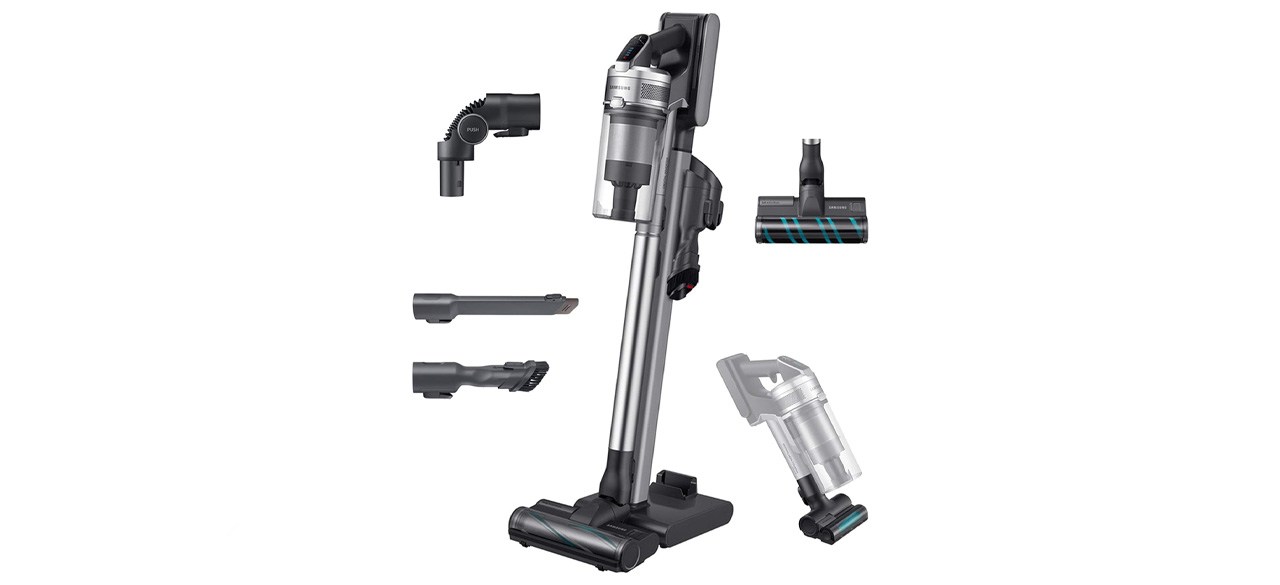 Orange County Register
Orange County Register

The EU retaliates against Trump’s trade moves and slaps tariffs on produce from Republican states
- March 12, 2025
By LORNE COOK and DAVID McHUGH, Associated Press
BRUSSELS (AP) — The European Union on Wednesday announced retaliatory trade action with new duties on U.S. industrial and farm products, responding within hours to the Trump administration’s increase in tariffs on all steel and aluminum imports to 25%.
The world’s biggest trading bloc was expecting the U.S. tariffs and prepared in advance, but the measures still place great strain on already tense transatlantic relations. Only last month, Washington warned Europe that it would have to take care of its own security in the future.
The EU measures will cover goods from the United States worth some 26 billion euros ($28 billion), and not just steel and aluminum products, but also textiles, home appliances and agricultural goods. Motorcycles, bourbon, peanut butter and jeans will be hit, as they were during President Donald Trump’s first term.
The EU duties aim for pressure points in the U.S. while minimizing additional damage to Europe. The tariffs — taxes on imports — primarily target Republican-held states, hitting soybeans in House speaker Mike Johnson’s Louisiana, but also beef and poultry in Kansas and Nebraska. Produce in Alabama, Georgia and Virginia is also on the list.
The EU moves to protect itself
European Commission President Ursula von der Leyen said in a statement that the bloc “will always remain open to negotiation.”
“As the U.S. are applying tariffs worth 28 billion dollars, we are responding with countermeasures worth 26 billion euros,” she said. The commission manages trade and commercial conflicts on behalf of the 27 member EU countries.

“We firmly believe that in a world fraught with geopolitical and economic uncertainties, it is not in our common interest to burden our economies with tariffs,” von der Leyen said.
The commission also said that steel and aluminum products would be hit in return, but also textiles, leather goods, home appliances, household tools, plastics and wood. Agricultural products will also be impacted — including poultry, beef, some seafood, nuts, eggs, sugar and vegetables.
Trump said his taxes would help create U.S. factory jobs, but von der Leyen said: “Jobs are at stake. Prices will go up. In Europe and in the United States.”
“We deeply regret this measure. Tariffs are taxes. They are bad for business, and even worse for consumers. These tariffs are disrupting supply chains. They bring uncertainty for the economy,” she said.
American business group urges talks
The American Chamber of Commerce to the EU said the U.S. tariffs and EU countermeasures “will only harm jobs, prosperity and security on both sides of the Atlantic.”
“The two sides must de-escalate and find a negotiated outcome urgently,” the chamber said Wednesday.
What will actually happen?
Trump slapped similar tariffs on EU steel and aluminum during his first term in office, which enraged European and other allies. The EU also imposed countermeasures in retaliation at the time, raising tariffs on U.S.-made motorcycles, bourbon, peanut butter and jeans, among other items.

This time, the EU action will involve two steps. First, on April 1, the commission will reintroduce what it calls “rebalancing measures,” which the EU had from 2018 and 2020 but which were suspended under the Biden administration. Then on April 13 come the additional duties targeting $19.6 billion in U.S. exports to the bloc.
EU Trade Commissioner Maroš Šefčovič traveled to Washington last month in an effort to head off the tariffs, meeting with U.S. Commerce Secretary Howard Lutnick and other top trade officials.
He said on Wednesday that it became clear during the trip “that the EU is not the problem.”
“I argued to avoid the unnecessary burden of measures and countermeasures, but you need a partner for that. You need both hands to clap,” Šefčovič told reporters at the European Parliament in Strasbourg, France.
European steel companies brace for losses
The EU could lose up to 3.7 million tons of steel exports, according to the European steel association Eurofer. The U.S. is the second biggest export market for EU steel producers, representing 16% of the total EU steel exports.
The EU estimates that annual trade volume between both sides stands at about $1.5 trillion, representing some 30% of global trade. While the bloc has a substantial export surplus in goods, it says that is partly offset by the U.S. surplus in the trade of services.
Britain, which isn’t part of the EU, meanwhile said it won’t impose retaliatory measures of its own on the U.S. British Business Secretary Jonathan Reynolds said Wednesday he would “continue to engage closely and productively with the U.S. to press the case for U.K. business interests.”
He did not rule out future tariffs on U.S. imports, saying “we will keep all options on the table and won’t hesitate to respond in the national interest.”
McHugh reported from Frankfurt. Associated Press writer Jill Lawless in London contributed to this report.
 Orange County Register
Orange County Register

Best BLACK+DECKER steam iron
- March 12, 2025
Which BLACK + DECKER steam irons are best?
There’s simply no better look than freshly ironed, wrinkle-free clothing. Whether you’re on the way to a job interview, party or want to be the best dressed at the office, a good steam iron is irreplaceable. With the BLACK+DECKER brand, you can rest assured that any steam iron will get the job done right.
The best steam iron they offer is the BLACK+DECKER Allure Professional Steam Iron. This option is durable and has independent steam and temperature controls.
What to know before you buy a BLACK+DECKER steam iron
Corded vs. cordless steam irons
Corded: Corded steam irons plug into a wall outlet. They get hotter and stay hot much better than cordless options, giving them a more consistent ironing.
Cordless: Cordless models can be used anywhere and run on a rechargeable battery. They are more maneuverable as well, thanks to not having a cord poking out of them.
Wattage
The wattage of your steam iron determines how quickly it can heat up and the maximum temperature it can reach. Higher wattages are also better for thicker fabrics. BLACK+DECKER steam irons are typically available in models between 1,200-1,700 watts.
Soleplate
The soleplate is the flat bottom end of the steam iron that contacts your fabrics. BLACK+DECKER offers steam irons with ceramic, stainless steel, aluminum and other nonstick material soleplates. Stainless steel and ceramic cost more but glide far easier and tend to be more durable than aluminum or other nonstick soleplates.
What to look for in a quality BLACK+DECKER steam iron
Vertical steam
Certain models of BLACK+DECKER steam irons have a vertical steam feature that turns your iron into a steamer by allowing you to hold it several inches away from the fabric to release wrinkles. It’s perfect for delicate materials or hanging objects, like curtains.
Auto-cleaning system
Another excellent feature in some BLACK+DECKER steam irons is the auto-clean system. This system automatically removes the mineral deposits and dirt that can build up inside your steam iron, though it isn’t as effective in areas with harder water.
How much you can expect to spend on a BLACK+DECKER steam iron
A basic steam iron will only cost around $15-$30, with excellent midrange options opening up between $30-$45. The best options are available between $45-$60.
BLACK+DECKER steam iron FAQ
Is there a particular type of water I should use with a steam iron?
A. Generally speaking, it’s perfectly fine to use your run-of-the-mill tap water with a steam iron. That said, make sure to double-check the manufacturer’s instructions to be safe. Some models might be more sensitive to particles in the water, especially if the tap water in your area is much harder than most. To be safe, you can always stick to using distilled water.
What is the best way to clean the soleplate on my steam iron?
A. First of all, make doubly sure that the steam iron is unplugged and completely cool to the touch. Once this is ensured, use a nonabrasive cloth soaked in a mixture of water and mild dish soap to gently wipe the soleplate clean. Use a second cloth with only water to rinse. Finally, dry your steam iron with a third cloth. Never use sponges, brushes or any other abrasive cleaner, as you could damage the soleplate.
What’s the best BLACK+DECKER steam iron to buy?
Top BLACK+DECKER steam iron
BLACK+DECKER Allure Professional Steam Iron
What you need to know: If you need a durable and top-tier steam iron, then look no further than the Allure.
What you’ll love: Auto shut-off and auto-clean help make cleaning easy and lower the risk of any accidents occurring.
What you should consider: It’s very difficult to see into the reservoir to see how much water is actually inside it.
Top BLACK+DECKER steam iron for the money
BLACK+DECKER Easy Steam Compact Iron
What you need to know: An excellent, affordable option, this model gets the job done well and has a few extra features for good measure.
What you’ll love: A nonstick soleplate moves easily over fabrics, and the antidrip plus Smart Steam makes regulating the amount of water a dream.
What you should consider: There’s no on or off button. You have to either unplug the steam iron or allow the auto-shutoff to trigger.
Worth checking out
BLACK+DECKER Vitessa Advanced Steam Iron
What you need to know: A wonderfully convenient and very evenly heated and steamed option that looks incredibly sleek.
What you’ll love: This steam iron can be used both vertically and horizontally. Plus, it has a retractable cord for easy storage.
What you should consider: The water reservoir can be surprisingly difficult to both open and fill.
Prices listed reflect time and date of publication and are subject to change.
Check out our Daily Deals for the best products at the best prices and sign up here to receive the BestReviews weekly newsletter full of shopping inspo and sales.
BestReviews spends thousands of hours researching, analyzing and testing products to recommend the best picks for most consumers. BestReviews and its newspaper partners may earn a commission if you purchase a product through one of our links.
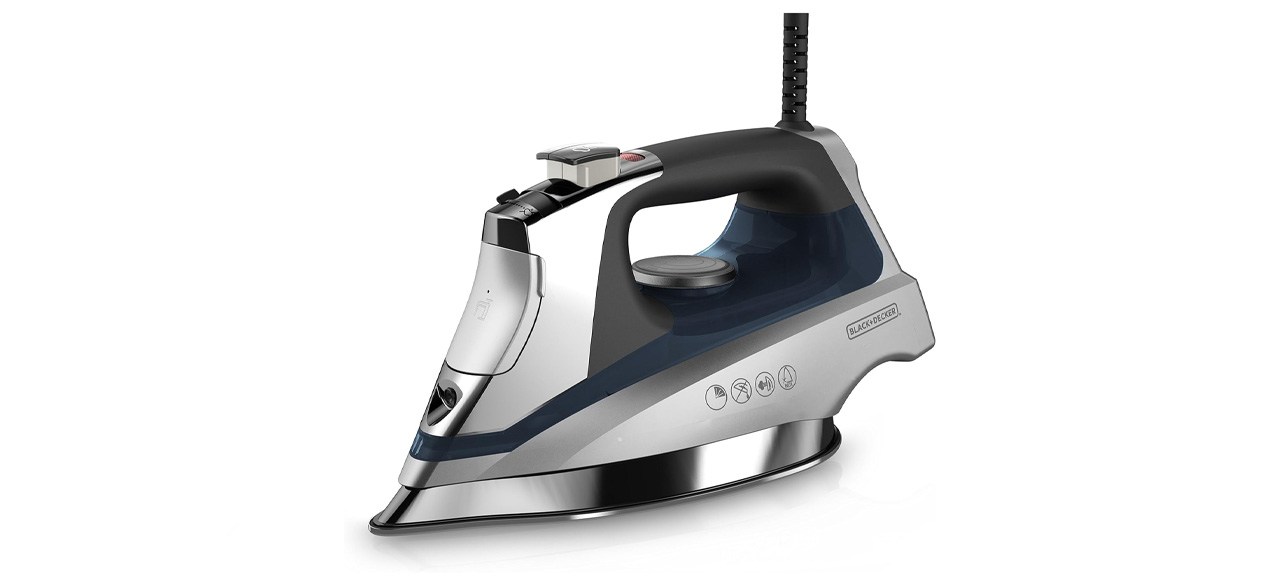 Orange County Register
Orange County Register

LAFC loses to Crew but advances to CONCACAF Champions Cup quarterfinals
- March 12, 2025
COLUMBUS, Ohio — The Los Angeles Football Club lost a battle but won the war.
Despite losing to the Columbus Crew, 2-1, on Tuesday night, LAFC advanced to the quarterfinals of the CONCACAF Champions Cup with a 4-2 aggregate score in their two-leg series.
LAFC took a healthy cushion into the second leg after a dominant performance last week at BMO Stadium, but a strong first-half showing gave Columbus a chance. After former LAFC forward Diego Rossi eluded the LAFC defense along the left flank in the 10th minute, he lifted a cross into the box and Jacen Russell-Rowe volleyed it in from close range.
When Rossi converted a penalty kick just before halftime the Crew trailed just 3-2 on aggregate. Columbus – which outshot LAFC 22-9 – had several chances in the second half, including a shot in stoppage time by Dylan Chambost that was stopped by LAFC goalkeeper Hugo Lloris.
LAFC secured the series when Denis Bouanga capped a two-on-one breakaway with Cengiz Under by rolling in a goal in the sixth minute of second-half stoppage time, his third of the series.
LAFC will face either Inter Miami or Jamaica’s Cavalier in the quarterfinals. Miami leads 2-0 on aggregate with the second leg to be played on Thursday in Kingston, Jamaica.
Orange County Register
Read More
Sage Hill girls basketball surges late to beat Windward for CIF SoCal Regional title
- March 12, 2025
Support our high school sports coverage by becoming a digital subscriber. Subscribe now
NEWPORT COAST — Sage Hill’s girls basketball team began the season looking like a rebuilding project. Four starters, who were foundation players for the program’s rise, had graduated.
On Tuesday, the reassembly performed masterfully, especially when it mattered most.
With returning guard Amalia Holguin leading the way, the No. 2-seeded Lightning closed the fourth quarter with an 11-0 run to defeat No. 4 seed Windward 52-41 in the Division I final of the CIF Southern California Regional at Sage Hill.
On the final play, Holguin fittingly grabbed the rebound and tossed the ball into the air as Sage Hill (23-11) celebrated its second trip to the state championships in four seasons. On Friday at 6 p.m., the Lightning will play Carondelet in the CIF State championship at Golden 1 Center in Sacramento.
“We’ve been working for this all season,” said Holguin, who scored 17 of her game-high 24 points in the second half. “It’s no surprise to me that we did that. Windward is a great team and they came through to punch us in the mouth but I think we just came stronger.”
“I’m super proud of how we kept our composure,” added the junior, who also had eight rebounds.
Sage Hill entered the final with a 2-0 record against Windward (21-11) this season but the Wildcats tied the score 41-41 on a jumper by Olivia Lagao (16 points) with about 2:25 left in the fourth.
The Lightning responded an 11-0 surge that began with a drive for a go-ahead, three-point play by freshman guard Addison Uphoff (12 points) with 2:08 remaining.
Holguin added her own drive with about 1:35 left and the sank a 3-pointer from the top of the arc with 57 seconds left that Sage Hill coach Kerwin Walters called the “dagger” shot.
“Amalia does not fear the moment,” Walters said. “She’s always embraced big games, big shots. That’s just who she is.”
Holguin also drove the length of the floor with about 3:30 left in the fourth for a 41-39 lead and Sage Hill’s first points of the quarter.
But Sage Hill’s man defense was equally important to the finish. Holguin and Uphoff each blocked shots on Windward’s final possession as the Lightning forced the Wildcats to missed their final 11 attempts. Windward didn’t score for the final 2:25.
Freshman center Eve Fowler and sophomore wing Kamdyn Klamberg led Sage Hill in rebounds with 17 and 15, respectively.
Uphoff, Fowler, Klamberg and junior Alyssa Cuff join Holguin in Sage Hill’s new-look starting lineup. Freshman Leah O’Toner and senior Isabella Rose are the key players off the bench for a program that won the Division II state title in 2022.
Two of the stars of that team — Kat Righeimer and Zoie Lamkin — were in the stands Tuesday. They were part of Sage Hill’s “Mamba 5” of girls who played on the famed youth team coached by the late Kobe Bryant. Now, with Holguin and several new faces, the Lightning are headed back to state.
“There’s been a lot of ups and downs (this season) and I think we’ve just started to figure out what we really are,” Walters said. “We have a great balance of youth and we have mature leaders with Amalia, Alyssa and Kam. But our freshmen are freaking phenomenal. … I’m just excited to see what these girls do.”
 Orange County Register
Orange County Register

Kings take down Islanders for 3rd straight win
- March 12, 2025
LOS ANGELES — With the last quarter of the regular season in front of them, the Kings earned a third straight victory on Tuesday night, stifling the New York Islanders, 4-1, at Crypto.com Arena.
The Kings took eight penalties, but it was all for naught as the Islanders failed to convert. The hosts scored twice in short-handed situations and connected on a pair of even-strength goals to move within one point of second-place Edmonton in the Pacific Division race.
Two of the least effective power-play teams in the NHL both had chances come and go in the opening 10 minutes.
At 15:33, though, the Kings helped themselves before a man advantage materialized on a delayed penalty when Islanders defenseman Tony DeAngelo slashed Warren Foegele in the visitors’ defensive zone.
Cycling the puck around for 40 seconds, the Kings patiently worked through the Islanders, firing a pair of shots at goaltender Ilya Sorokin prior to defenseman Vladislav Gavrikov ripping a one-time slap shot (assists to Jordan Spence and Anze Kopitar plus a screen in front of the net by Phillip Danault) to beat the Russian above his left shoulder.
Action ramped up on both ends during the second period.
Kings goaltender Darcy Kuemper stopped a pair of early breakaways, denying forward Casey Cizikas and Pierre Engvall, before the New Yorkers found the net at 8:37 when Anders Lee scored his 25th of the season to finish a length-of-the-ice sequence.
The Kings (34-20-9, 77 points) jumped ahead again 37 seconds later when Danault scored his sixth goal of 2025 on a wrist shot from the top of the left circle. The play was made by Foegele, who dumped and chased the puck, sparking a turnover along the boards with the help of Trevor Moore.
The first of three second-period penalties against the Kings, a high-sticking call on Alex Turcotte at 9:39, appeared to produce a rare conversion for the Islanders. But a coach’s challenge confirmed that Anthony Duclair’s doorstep finish was aided by goaltender interference when Simon Holstrom’s skate snared Kuemper.
Kuemper’s strong performance closed with 33 saves.
Turcotte nearly made it 3-1 as he burst out of the penalty box and had a free run at Sorokin. It was denied, but moments later, as the Islanders attempted another power play, Kings forward Quinton Byfield provided his team a two-goal advantage at the 14-minute mark, roofing a short-handed, unassisted laser.
With Gavrikov serving a 2-minute minor for holding, the Islanders (29-28-7, 65 points) seemed to immediately capitalize when Lee, who was camped out in front of Kuemper, shoveled a backhand past Kuemper. Kings head coach Jim Hiller challenged once more and was rewarded with the second goaltender interference call of the evening to keep their 3-1 edge.
Drew Doughty’s second goal of the season made it 4-1 at 18:43, when the Canadian defenseman’s short-handed shot found an empty net.
Four additional penalties against the Kings came and went in the final period. The hosts totaled 16 minutes in the box compared to two for New York, which was swept in the season series for the 13th time.
More to come on this story.
Orange County Register
Read MoreNews
- ASK IRA: Have Heat, Pat Riley been caught adrift amid NBA free agency?
- Dodgers rally against Cubs again to make a winner of Clayton Kershaw
- Clippers impress in Summer League-opening victory
- Anthony Rizzo back in lineup after four-game absence
- New acquisition Claire Emslie scores winning goal for Angel City over San Diego Wave FC
- Hermosa Beach Open: Chase Budinger settling into rhythm with Olympics in mind
- Yankees lose 10th-inning head-slapper to Red Sox, 6-5
- Dodgers remain committed to Dustin May returning as starter
- Mets win with circus walk-off in 10th inning on Keith Hernandez Day
- Mission Viejo football storms to title in the Battle at the Beach passing tournament

